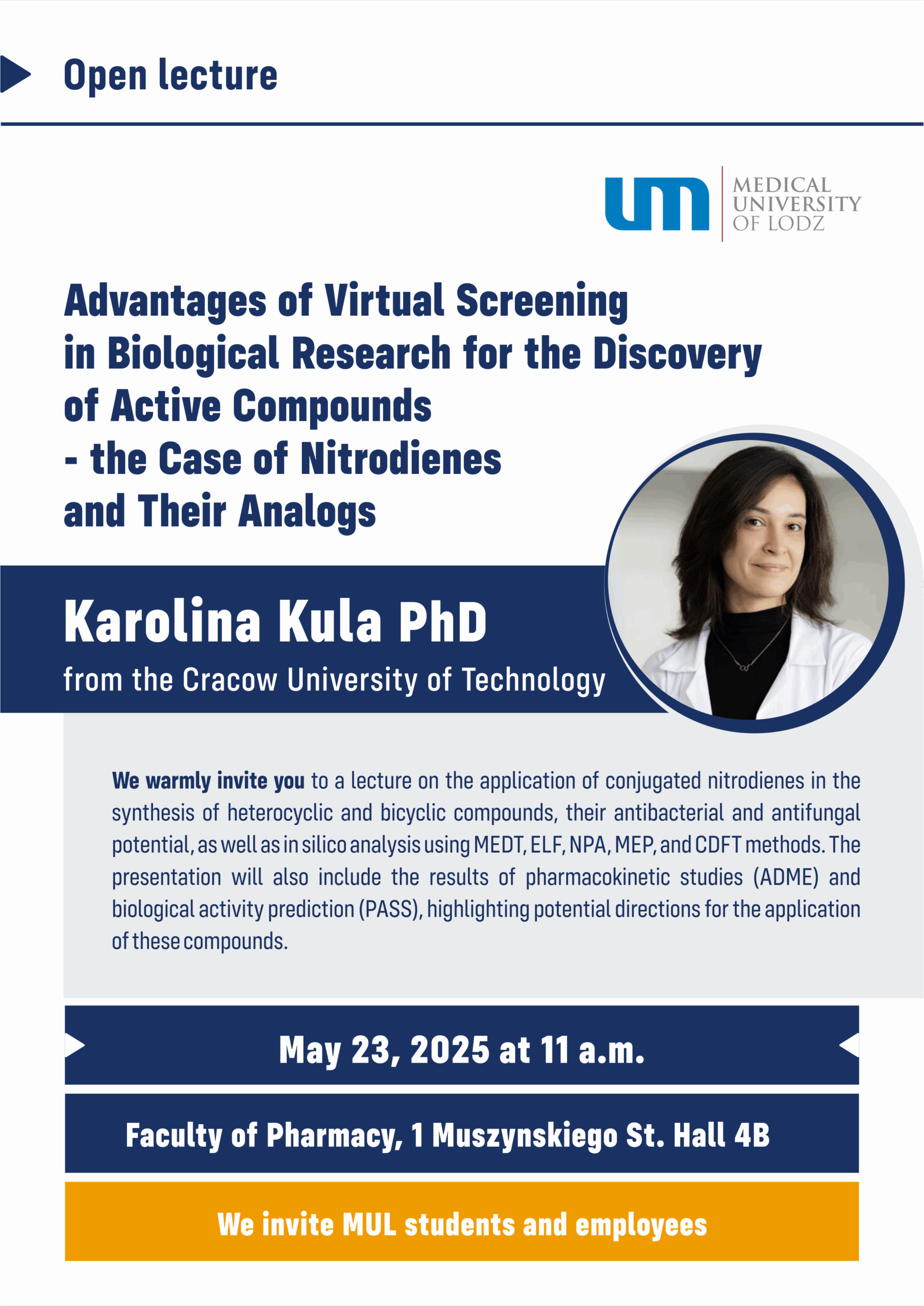OPEN LECTURE by KAROLINA KULA PhD Eng. FROM TADEUSZ KOŚCIUSZKO CRACOW UNIVERSITY OF TECHNOLOGY
Professor Elżbieta Budzisz, PhD, DSc, from the Department of Chemistry of Cosmetic Raw Materials, together with the Dean of the Faculty, Professor Anna Kilanowicz-Sapota, PhD, DSc, have the pleasure of inviting you to a lecture by Dr. Karolina Kula from the Cracow University of Technology.

The lecture will focus on conjugated nitrodiene (CND) compounds used in the synthesis of heterocyclic structures. In addition to this application, CNDs can be employed in the formation of condensed bis-cyclic systems through [3+2] cycloaddition reactions. The presence of a nitro group in the structure of the obtained products enables their further chemical modification.
This class of compounds has also demonstrated antibacterial activity. One representative example, (1E,3E)-1,4-dinitro-1,3-butadiene, exhibits activity against Staphylococcus aureus strains, as well as fungal species such as Aspergillus niger and Uromyces phaseoli. These properties make it a promising candidate for use as a rust-preventing agent in the agrochemical industry.
The lecture will also present a comprehensive in silico analysis of conjugated nitrodienes and their analogues. For this purpose, a methodology based on Molecular Electron Density Theory (MEDT) was applied, which included a topological analysis of the Electron Localization Function (ELF). This was further correlated with Natural Population Analysis (NPA) and the Molecular Electrostatic Potential (MEP) of the studied molecules, allowing for detailed characterization of their electronic structures.
Additionally, reactivity descriptors were analysed using selected aspects of Conceptual Density Functional Theory (CDFT) to identify the most reactive centres within the molecules.
To assess the biological potential and suggest possible applications for the tested compounds, basic pharmacokinetic parameters were calculated using a protocol that integrates Absorption, Distribution, Metabolism, and Excretion (ADME) criteria. The results were evaluated according to drug-likeness filters proposed by Lipinski, Ghose, Veber, Egan, and Muegge.
Finally, the application potential of the studied molecules was predicted using the Prediction of Activity Spectra for Substances (PASS) approach, which estimates the likelihood of a given biological activity as well as the probability of its absence.







